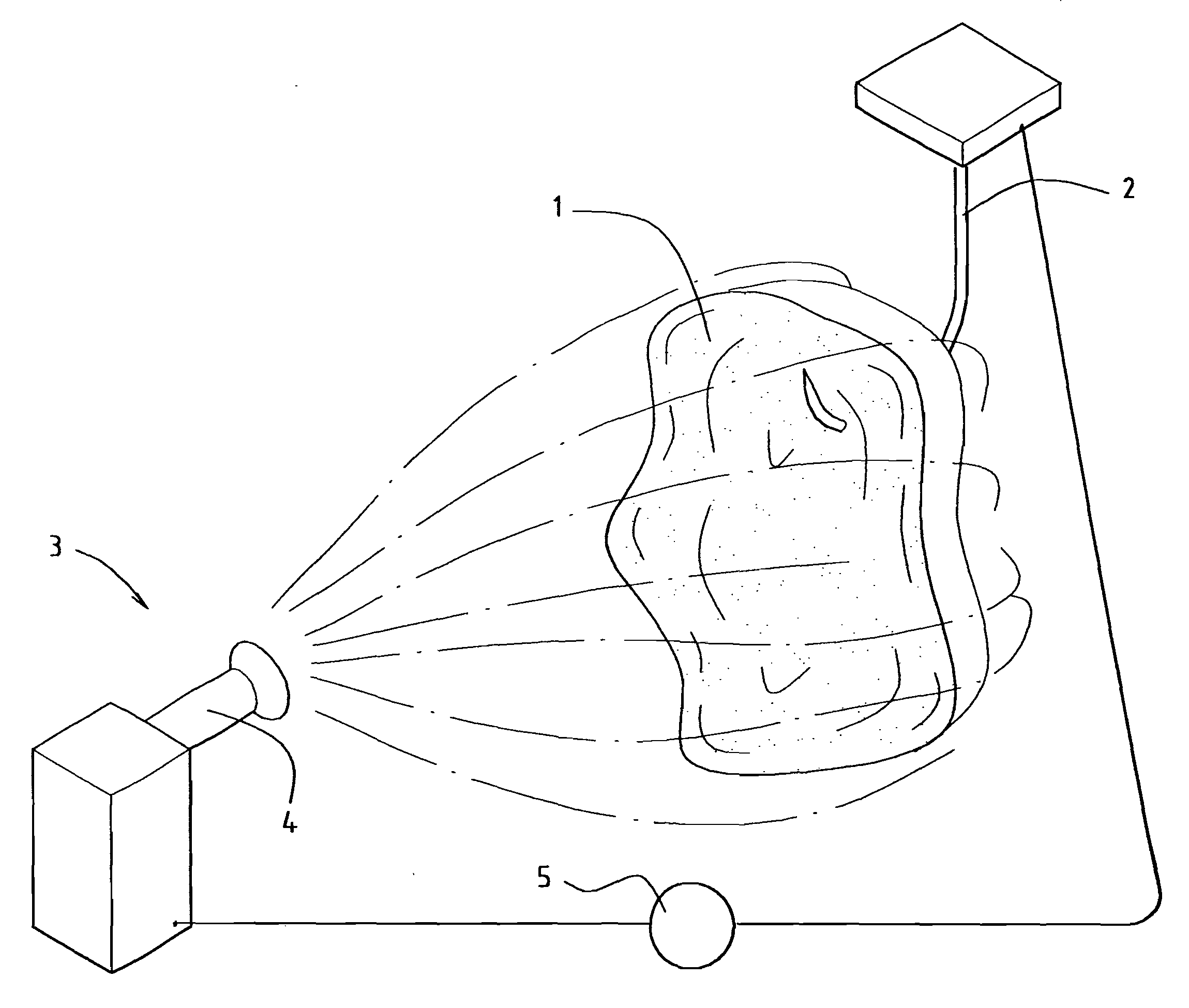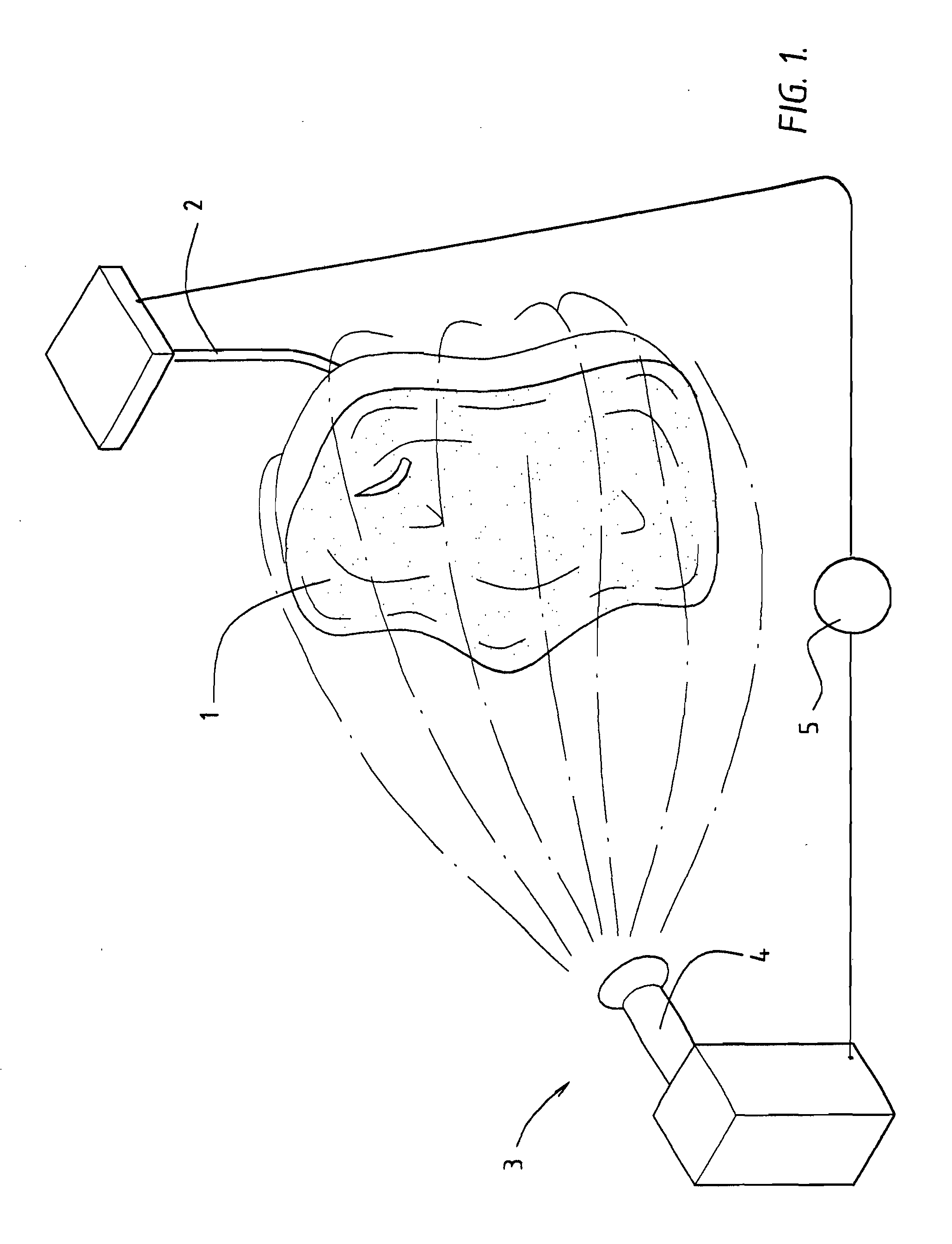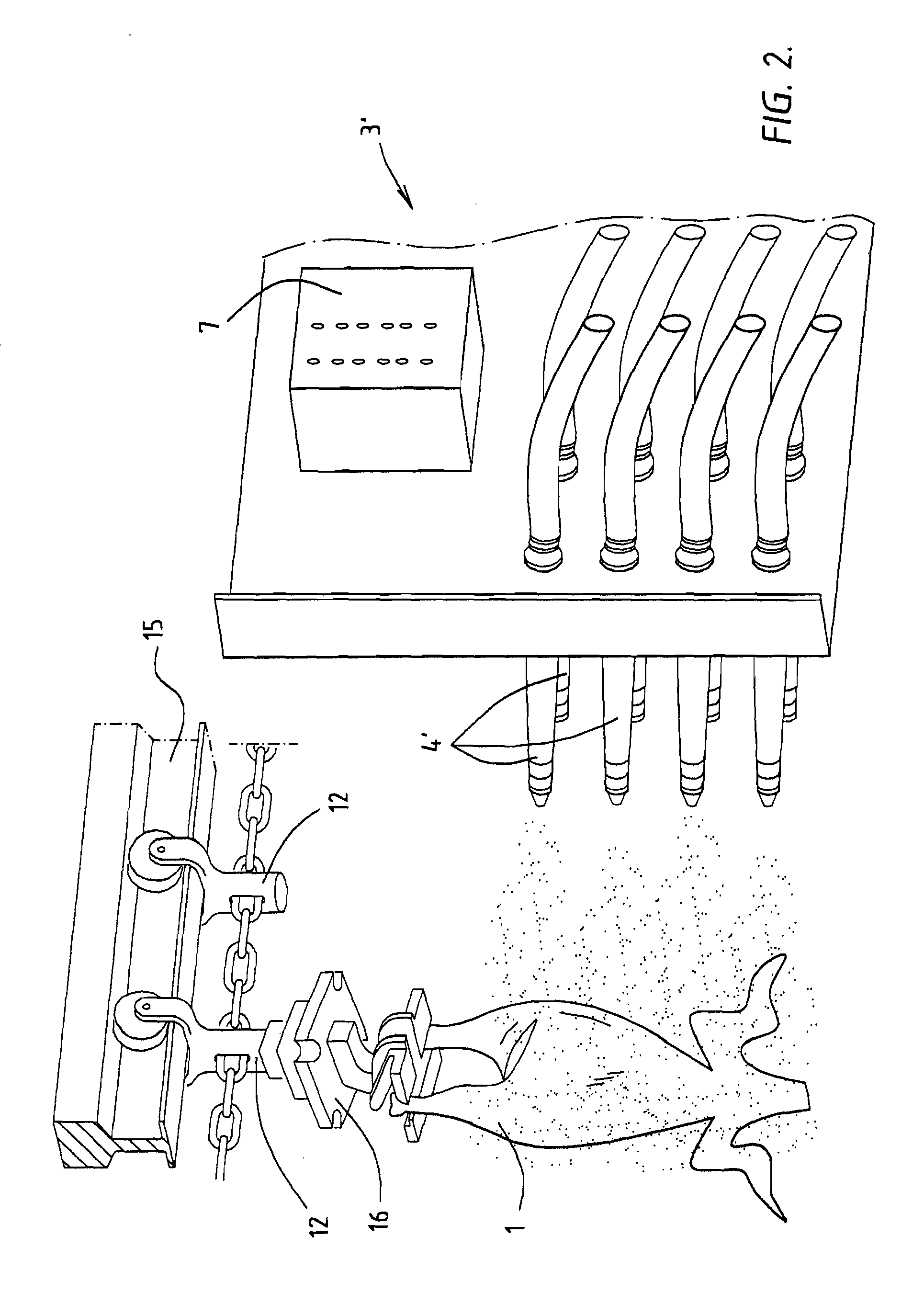Adding an additive to a meat product
a technology of meat products and additives, applied in the direction of poultry transferring/transporting devices, food preservation, poultry cleaning/disinfection, etc., can solve the problems of inability to efficiently incorporate the method of marinating in a continuously operating treatment process for meat products, continuity must be interrupted, and the amount of meat in the tumbler cannot be varied as desired
- Summary
- Abstract
- Description
- Claims
- Application Information
AI Technical Summary
Benefits of technology
Problems solved by technology
Method used
Image
Examples
Embodiment Construction
[0054]FIG. 1 shows a meat product 1, which in this figure is shown diagrammatically purely by way of example. The meat product 1 is, in particular, a slaughtered fowl or a part thereof, such as for example an entire chicken or part thereof, such as a chicken leg, wing, breast portion or drumstick. The meat product 1 is situated in an additive-application station 3, which is shown in extremely diagrammatic form and is to be described in more detail below, and is held securely in place by a meat-product holder 2, which is likewise shown only in diagrammatic form and may also be of entirely different design. In this example shown in FIG. 1, the meat-product holder 2 is of electrically conductive design, for example made from stainless steel, and makes electrically conductive contact with the meat product 1.
[0055]The additive-application station 3 comprises an electrostatic additive-application device with one or more jet nozzles 4, which are directed towards the meat product 1, for del...
PUM
 Login to View More
Login to View More Abstract
Description
Claims
Application Information
 Login to View More
Login to View More - R&D
- Intellectual Property
- Life Sciences
- Materials
- Tech Scout
- Unparalleled Data Quality
- Higher Quality Content
- 60% Fewer Hallucinations
Browse by: Latest US Patents, China's latest patents, Technical Efficacy Thesaurus, Application Domain, Technology Topic, Popular Technical Reports.
© 2025 PatSnap. All rights reserved.Legal|Privacy policy|Modern Slavery Act Transparency Statement|Sitemap|About US| Contact US: help@patsnap.com



